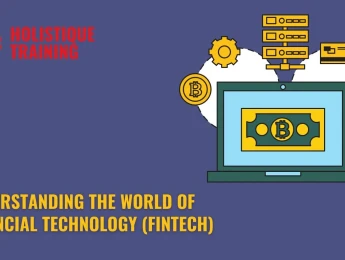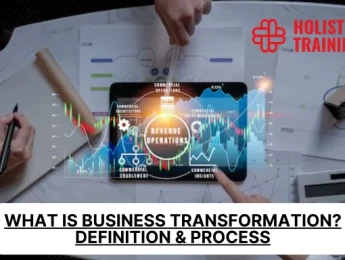- Table of Contents
- Introduction
- What Is Participative Management?
- The Main Principles of Participative Management
- Shared Decision-Making
- Open Communication
- Inclusivity
- Trust and Empowerment
- What Is a Culture of Engagement?
- How Can Participative Management Foster a Culture of Engagement?
- Increased Ownership
- Recognition and Value
- Innovation and Creativity
- Enhanced Job Satisfaction
- Collaborative Environment
- Advantages of the Participative Management Style
- Better Decision-Making
- Higher Employee Morale
- Talent Retention
- Adaptability
- Innovation
- Challenges of Participative Management in Remote Work
- Communication Barriers
- Time Zone Differences
- Technology Hurdles
- Isolation
- Lack of Nonverbal Cues
- Conclusion
Introduction
Amid the shifting tides of modern organisational dynamics, management styles are evolving at a rapid pace. As businesses seek to create more inclusive and collaborative environments, participative management emerges as a beacon of engagement and empowerment. This approach not only empowers employees but also fuels a culture of innovation and ownership, resonating deeply in a world where active involvement and diverse perspectives are cherished assets. In this blog post, we embark on a journey to unravel the nuances of participative management and explore its profound impact on nurturing cultures of engagement within organisations.
What Is Participative Management?
Participative management, often referred to as employee involvement or shared decision-making, is a management style that emphasises involving employees in the decision-making processes of an organisation. Rather than a traditional hierarchical model where decisions are made exclusively by top management and disseminated downwards, participative management encourages a collaborative approach where employees at all levels contribute to decision-making.
The Main Principles of Participative Management
Participative management operates on a foundation of principles that guide its implementation and set the stage for a more collaborative and engaged workplace. These principles go beyond surface-level concepts, delving into the very essence of how organisations function and how employees are empowered within them.
Shared Decision-Making
At the core of participative management lies the principle of shared decision-making. Unlike traditional hierarchical structures, where decisions trickle down from the top, participative management invites employees from all levels of the organisation to contribute their insights and opinions to the decision-making process. This principle champions the idea that those who are directly involved in the day-to-day operations possess valuable on-the-ground knowledge that can lead to more informed choices.
Shared decision-making is not a mere token gesture; it's an acknowledgment of employees' expertise and an embodiment of the organisation's commitment to value their input. As employees collaborate to make decisions that impact their work, they experience a sense of agency and ownership. This, in turn, fuels a stronger emotional connection to the organisation's goals and a deeper commitment to achieving them.
Open Communication
Transparent and open communication serves as the lifeblood of participative management. It's a principle that hinges on the belief that when employees feel free to express their ideas, concerns, and suggestions, the organisation benefits from a rich tapestry of perspectives. In a culture of open communication, individuals are encouraged to voice dissenting opinions, challenge prevailing assumptions, and propose alternatives. This creates an environment where innovative solutions can emerge from the fusion of diverse viewpoints.
Furthermore, open communication nurtures a sense of trust between employees and management. When employees perceive that their voices are heard and their opinions matter, they're more likely to trust in the integrity of the decision-making process. This, in turn, leads to increased job satisfaction, as employees know they have a stake in shaping the organisation's trajectory.
Inclusivity
Inclusivity is a cornerstone principle that underscores the importance of involving employees from all corners of the organisation, regardless of their roles or positions. This principle recognises that innovation doesn't reside exclusively at the upper echelons; it can emerge from any level of the workforce. By inviting a diverse array of perspectives, participative management encourages the collision of different ideas and experiences, sparking creativity and novel approaches.
Inclusivity isn't just about involving employees; it's about valuing their contributions irrespective of their job titles. When individuals feel their voices are respected and considered, they're more likely to be engaged and motivated to contribute wholeheartedly to the organisation's success.
Trust and Empowerment
Trust and empowerment form the bedrock upon which participative management is built. When employees are trusted to make decisions and empowered with the authority to act on those decisions, they develop a sense of responsibility and accountability. They understand that their choices have real-world consequences and take ownership of the outcomes.
This principle challenges traditional notions of micromanagement and encourages managers to delegate authority based on individual competencies. Trusting employees to make decisions within their areas of expertise not only lightens the managerial burden but also showcases faith in their abilities, bolstering their self-esteem and motivation.
What Is a Culture of Engagement?
A culture of engagement transcends the mere transactional relationship between employees and their jobs. It embodies a profound shift in the way employees perceive their roles within the organisation. In this environment, monetary incentives are not the sole driving force; instead, employees find intrinsic motivation in their work. They are not just content with completing tasks; they are genuinely enthusiastic about their responsibilities, finding fulfilment in the impact they create. This passion stems from a shared sense of purpose, where every employee sees themselves as an integral part of the larger organisational mission.
Moreover, in a culture of engagement, employees exhibit a deep commitment to the organisation's goals. They align their personal aspirations with the company's vision, understanding how their individual efforts contribute to the broader objectives. This alignment creates a synergy where personal growth and organisational success become intertwined, fostering a mutual investment between the employee and the organisation.
Crucially, engagement goes beyond the confines of the workplace; it permeates into employees' lives on a profound level. These individuals are not merely fulfilling job roles; they are actively participating in a journey toward a shared future. This emotional investment results in a workforce that is not just productive, but also innovative and resilient. Employees, feeling valued and engaged, are more willing to go the extra mile, explore creative solutions, and weather challenges with a positive attitude.
In essence, a culture of engagement transforms the workplace into a vibrant ecosystem where employees find meaning and fulfilment in their contributions. It fosters an atmosphere where creativity thrives, collaboration flourishes, and employees find a genuine sense of belonging. This emotional connection forms the cornerstone of a highly motivated and dedicated workforce, ultimately driving the organisation toward sustainable success and growth.
Participative Management Principle | How it Leads to Culture of Engagement |
Inclusive Decision-Making | Fosters sense of ownership and belonging |
Employee Empowerment | Encourages innovation and initiative |
Open Communication | Builds trust and transparency |
Collaboration and Teamwork | Enhances camaraderie and mutual support |
Recognition of Contributions | Boosts morale and job satisfaction |
Support for Skill Development | Cultivates continuous personal growth |
Valuing Diverse Perspectives | Promotes creativity and broader understanding |
How Can Participative Management Foster a Culture of Engagement?
According to Gallup's State Of The Global Workplace report, a staggering 85% of employees are disengaged in their work. By involving employees in decision-making processes, participative management nurtures a sense of ownership, collaboration, and dedication that transcends traditional notions of work. Let's explore in greater detail how participative management can foster a culture of engagement:
Increased Ownership
One of the most significant ways participative management fosters engagement is by instilling a sense of ownership among employees. When individuals are actively involved in making decisions that influence their work environment, they feel a deeper connection to the outcomes. This connection goes beyond a mere execution of tasks; it evolves into a personal investment in the organisation's success.
Imagine an employee who is part of the decision-making process for a project's direction. Their input and ideas are considered, and they witness their suggestions being incorporated into the plan. This employee becomes more than just an executor; they are a co-creator. Such an experience ignites a level of commitment that can't be replicated through traditional top-down management.
Recognition and Value
Participative management goes beyond delegation; it communicates that each employee's opinion is valuable and respected. When employees are given a platform to voice their ideas and concerns, they feel acknowledged and recognised for their expertise. This sense of validation boosts their self-esteem and confidence in their abilities.
Feeling valued isn't limited to monetary compensation; it extends to being heard and appreciated for one's contributions. When employees feel seen and heard, they are more likely to invest emotionally in their work and engage with enthusiasm.
Innovation and Creativity
The participative management approach is a fertile ground for innovation and creativity to flourish. By involving employees from diverse backgrounds and roles in decision-making, organisations tap into a wellspring of fresh perspectives and unique insights. These diverse viewpoints collide and intersect, sparking innovative solutions that might not have emerged within a closed hierarchical structure.
Imagine a brainstorming session where employees from different departments collaborate to address a complex challenge. Each individual brings their specialised knowledge and experiences to the table, creating a vibrant exchange of ideas that leads to breakthrough solutions. This atmosphere of creative collaboration resonates deeply with employees, driving engagement and enthusiasm.
Enhanced Job Satisfaction
Participative management transforms jobs from routine tasks into meaningful contributions. When employees are actively involved in shaping the organisation's direction, their work becomes more than just a means to an end. It's a vehicle for enacting change, making an impact, and contributing to a larger purpose.
Employees who find meaning in their work experience higher job satisfaction. They're not merely clocking in and out; they're invested in the organisation's mission and take pride in their role within it. This elevated job satisfaction translates to higher engagement levels and a more committed workforce.
Collaborative Environment
Participative management erases the barriers between departments and levels, creating a collaborative ecosystem. When employees collaborate across organisational silos, they gain a holistic view of the business and a deeper appreciation for their colleagues' expertise. This collaborative spirit builds stronger team bonds and fosters a sense of unity that transcends individual roles.
Imagine a scenario where a cross-functional team collaboratively determines the strategy for an upcoming product launch. Marketing, sales, design, and development teams contribute their perspectives, resulting in a comprehensive plan that takes all aspects into account. This collaborative approach enhances engagement by fostering a collective sense of achievement and belonging.
Advantages of the Participative Management Style
The participative management style is a transformative approach that brings forth a myriad of advantages for both employees and organisations. By involving employees in decision-making processes, organisations unlock a wealth of potential that leads to improved performance, innovation, and overall engagement. Let's delve deeper into the advantages of adopting the participative management style.
Better Decision-Making
In participative management, decisions are informed by a diverse array of perspectives, expertise, and experiences. This results in more well-rounded and comprehensive decision-making. When employees from various levels and departments contribute their insights, blind spots are minimised, and potential pitfalls are identified earlier in the process.
Imagine a company deciding on a new product launch strategy. Instead of relying solely on the insights of upper management, the participative approach gathers input from marketing, sales, design, and customer support teams. This collaborative decision-making process results in a strategy that considers a broader range of factors, increasing the likelihood of success.
Higher Employee Morale
Participative management is a powerful antidote to the sense of detachment that can arise in hierarchical structures. When employees are encouraged to contribute their ideas, they feel valued and recognised for their expertise. This recognition boosts morale and enhances job satisfaction, leading to a happier and more engaged workforce.
When an employee's suggestions lead to tangible outcomes, they are more likely to feel that their contributions matter. This sense of impact not only boosts morale but also motivates employees to invest their energy and dedication into their work.
Talent Retention
Engaged employees are less likely to seek opportunities elsewhere. Participative management creates an environment where employees feel heard, valued, and empowered. When individuals have a say in their work and can influence decisions, they are more likely to feel attached to the organisation and its goals.
Imagine a company where employees are encouraged to take ownership of their projects and collaborate on decisions that affect their roles. In such an environment, employees are less likely to consider leaving for a competitor, as they have a deep emotional connection to their work and the organisation's success.
According to Haiilo, recent research conducted among over 600 US businesses with 50-500 employees found that 63.3% of these companies struggle more with retaining employees than they do with the initial hiring process. So, make sure you foster a collaborative environment so you don’t have to keep looking for employees elsewhere.
Adaptability
In today's rapidly changing business landscape, adaptability is a prized asset. Participative management facilitates quicker responses to changing circumstances due to the collective intelligence of the workforce. When employees are actively engaged in decision-making, they can quickly adapt to market shifts, emerging trends, and unexpected challenges.
Consider an organisation facing a sudden shift in consumer preferences. In a participative management framework, employees across departments contribute their insights on how to adapt the product offering. This swift and collaborative decision-making enables the organisation to pivot effectively, seizing new opportunities and minimising disruption.
Innovation
The participative management style is a breeding ground for innovation. By encouraging employees to share their ideas and collaborate, organisations tap into a wellspring of creativity. When individuals feel empowered to contribute, they're more likely to propose unconventional solutions and novel approaches.
Imagine a team tasked with solving a complex problem. In a participative management setting, team members from different backgrounds bring diverse perspectives to the table. These varied viewpoints spark unconventional ideas that lead to innovative solutions, propelling the organisation ahead of its competitors.
Challenges of Participative Management in Remote Work
While participative management offers a host of benefits, implementing it in a remote work environment presents unique challenges. The digital landscape comes with its own set of hurdles that can hinder effective communication, collaboration, and decision-making. Let's explore these challenges and how organisations can navigate them when adopting participative management in a remote work setup.
Communication Barriers
Effective communication lies at the heart of participative management, but remote work introduces communication barriers that can impede the flow of information. In virtual environments, spontaneous conversations that occur in an office setting are replaced by scheduled meetings, emails, and chat messages. This can lead to misunderstandings, misinterpretations, and delayed responses, hindering the free exchange of ideas.
To mitigate this challenge, organisations must prioritise clear and transparent communication channels. Regular virtual meetings, video conferences, and collaboration tools can bridge the gap by allowing employees to discuss ideas and concerns in real-time. Encouraging asynchronous communication and providing clear guidelines for remote communication etiquette can also help alleviate communication barriers.
It's worth noting that despite the significant 77% of employees reporting high engagement in 2020, according to Quantum Workplace, engagement levels took a downturn after the initial impact of the pandemic, which is when remote work started being normalised. This illustrates the unique struggle of maintaining engagement in remote work scenarios.
Time Zone Differences
In a remote workforce spanning different time zones, coordinating participative decision-making can become a logistical puzzle. Scheduling meetings that accommodate employees across continents can be challenging and may lead to some team members feeling excluded from critical discussions.
To address this challenge, organisations can adopt flexible scheduling practices. Rotation of meeting times to accommodate different time zones, recording important discussions for later viewing, and leveraging collaboration tools that allow for asynchronous contributions can ensure that employees from all regions have the opportunity to participate meaningfully.
Technology Hurdles
Participative management relies heavily on technology for communication, collaboration, and decision-making. However, technical glitches, connectivity issues, and compatibility problems can disrupt the flow of discussions and decision-making processes.
To overcome technology hurdles, organisations should invest in reliable communication and collaboration tools that are user-friendly and accessible to all employees. Additionally, providing training and support to help employees navigate technical challenges can ensure smooth participation in remote decision-making processes.
Isolation
Remote work can lead to feelings of isolation and disconnection from the organisation and colleagues. Employees who lack a physical presence in the office may struggle to feel fully engaged and invested in participative decision-making processes.
To combat isolation, organisations should prioritise building a sense of community among remote employees. Regular virtual team-building activities, informal virtual coffee chats, and creating online spaces for non-work interactions can help foster a sense of belonging and camaraderie. When employees feel connected, they are more likely to engage actively in decision-making processes.
Lack of Nonverbal Cues
In remote communication, the absence of nonverbal cues such as body language and facial expressions can make it challenging to interpret the intent and emotions behind messages. This can lead to misunderstandings and hinder effective collaboration.
To address this challenge, organisations should encourage the use of video during virtual meetings whenever possible. Video conferencing allows participants to see each other's faces and expressions, which can enhance understanding and promote a more empathetic and collaborative atmosphere. Emphasising the use of emotive language and context-rich communication can also help bridge the gap caused by the lack of nonverbal cues.
Conclusion
Participative management is more than just a management style; it's a philosophy that transforms organisations into collaborative ecosystems. By involving employees in decision-making, this approach fosters a culture of engagement that enhances job satisfaction, innovation, and overall organisational performance. While challenges exist, particularly in remote work settings, the benefits of participative management far outweigh the drawbacks. As businesses continue to evolve and adapt, embracing participative management can be a strategic move towards building a more engaged and empowered workforce, ultimately propelling the organisation towards success in the ever-evolving business landscape.
As you embark on the journey of embracing participative management, remember that continuous learning is key. To further perfect your management and leadership skills, check out our course, ‘Perfecting Your Management and Leadership Skills.’ Equip yourself with the tools to excel in participative management and lead your team to unprecedented heights of success. Enrol now!






















